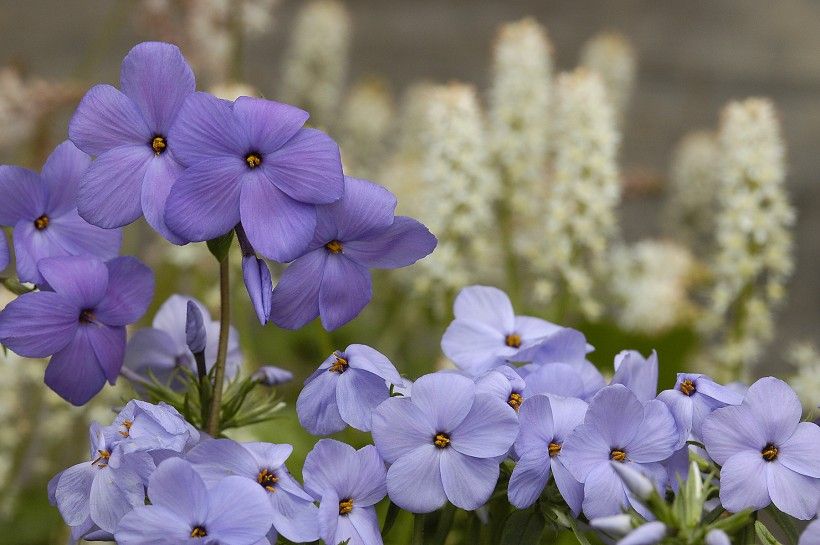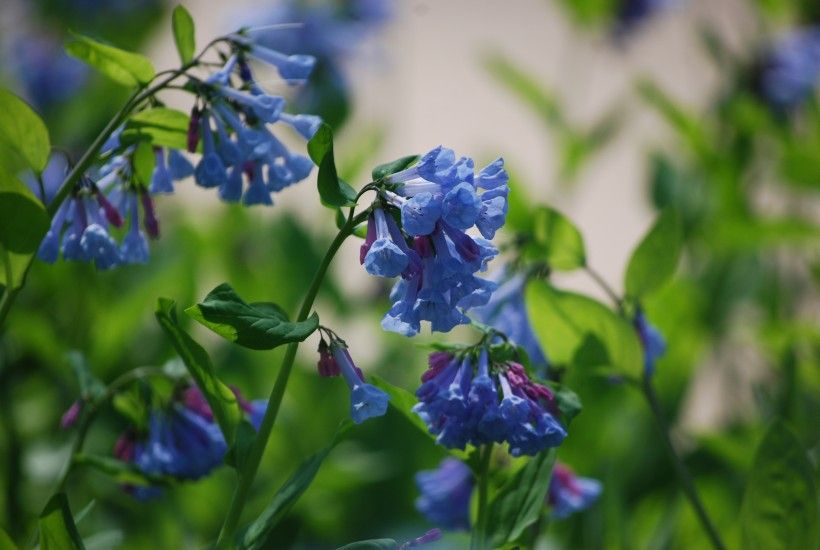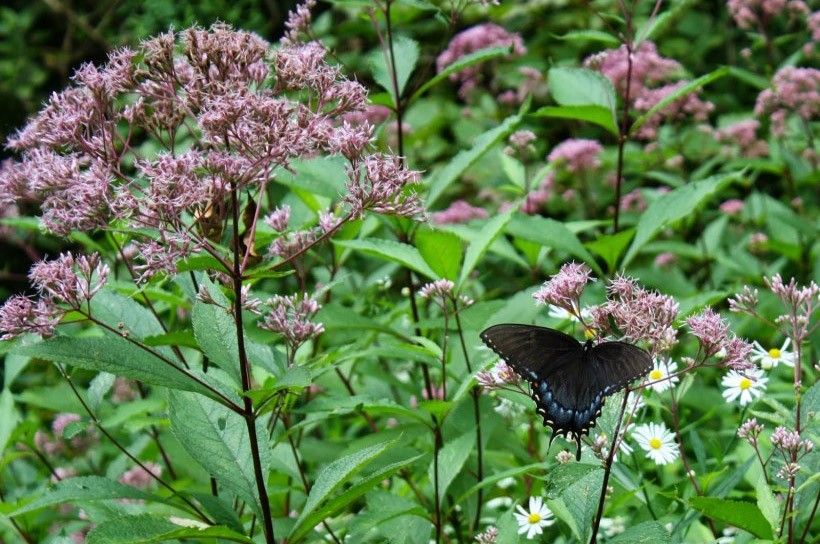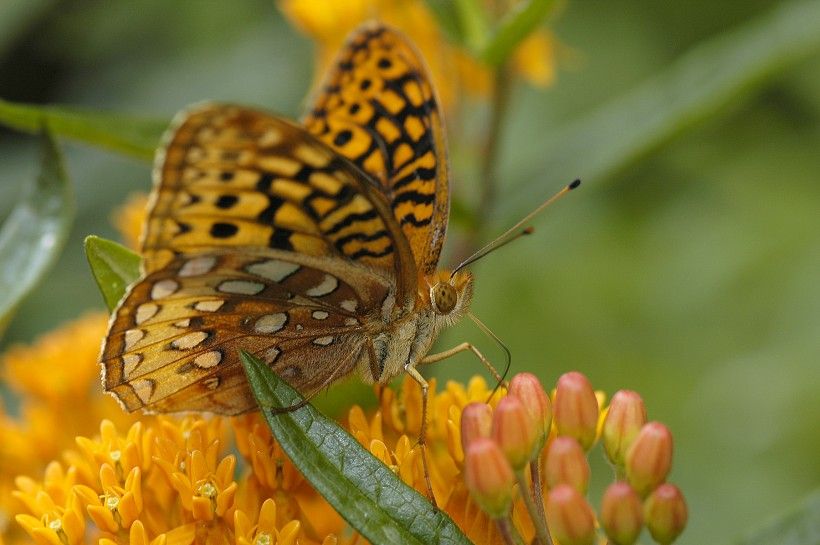Spring
Spring comes in early April with Bloodroot (Sanguinaria canadensis), one of the earliest displays. Buds rise from clasping leaves and develop into white, star-like flowers which open only on sunny days. The roots contain an orange-red sap, once used as an insect repellent, sore throat remedy, cough syrup and red dye.
In April and into May, the Virginia Bluebell (Mertensia virginica ) blooms, first visible as dark purple leaves emerging from the soil. Its clusters of bell-like flowers start as pink buds which transform as they open and mature into pale blue blossoms.


Several varieties of phlox, including the shade-loving Blue Phlox (Phlox divaricata), Creeping Phlox (Phlox stolonifera) and the sun-loving Downy Phlox (Phlox glaberrima) bloom from April through early June, bringing highlights of white, blue, violet and pink to the gardens. Also blooming in April and May are the airy white spikes of the Foamflower (Tiarella cordifolia) and sunny-yellow Wood Poppies (Stylophorum diphyllum)
Irises that show their colors in May and June, include the Larger Blue Flag (Iris versicolor) which prefer sunny wet areas, while the Crested Dwarf Iris (Iris cristata) is happier in the shady moist area found in the gardens along the museum's riverside.
Summer
Summer is heralded by Sundrops (Oenothera fruticosa), showy yellow flowers that open for the Memorial Day visitor and bloom for more than a month. Butterfly Weed (Asclepias tuberosa), with clusters of small orange, red or yellow flowers, is seen blooming in hot sunny areas from early June into September. As with other members of the milkweed family, it is an exclusive food source for the larvae of the Monarch butterfly, while flowers provide nectar for adult butterflies of all kinds.
July brings orange Turk's Cap Lilies (Lilium superbum) and orange-yellow Canada Lilies (Lilium canadense) once used by Indians as a thickening agent for meat soups. Several varieties of coneflower, including Thin-Leaved Coneflower (Rudbeckia triloba), Showy Coneflower (Rudbeckia fulgida variety speciosa), and Green-Headed Coneflower (Rudbeckia laciniata) bring butterflies to the gardens from July through September.


The intense red spikes of Cardinal Flowers (Lobelia cardinalis), with intense red spikes, are a favorite of both butterflies and hummingbirds. Hummingbirds also play a major role in pollinating the orange-red flowers of the Trumpet Vine (Campsis radicans) found vigorously climbing lamp poles in the parking areas
In the parking area's wetland habitat is Crimson-Eyed Rose Mallow (Hibiscus moscheutos) whose red-throated white blooms each last only one day, and Joe Pye Weed (Eupatoriadelphus fistulous), which never fials to attract large and small butterflies like the Eastern Swallow Tigertail and Silver Spotted Skipper.